Inbox and Environment News: Issue 391
January 27 - February 2, 2019: Issue 391
Out Studying The Tidal Zones And Sea Grass Areas Around Pittwater
At Station Beach, Barrenjoey - Photos by Guy Finlay
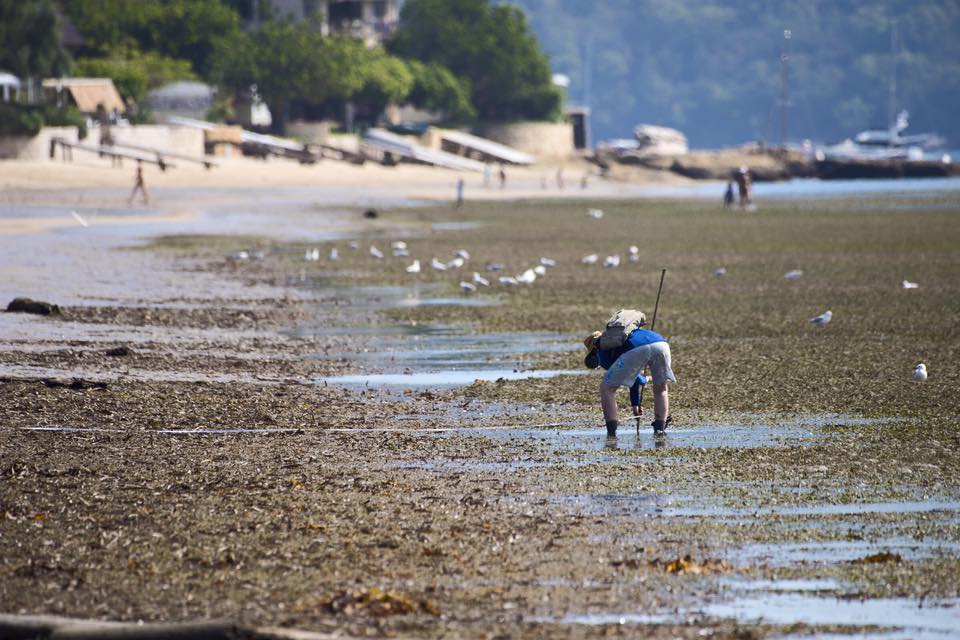
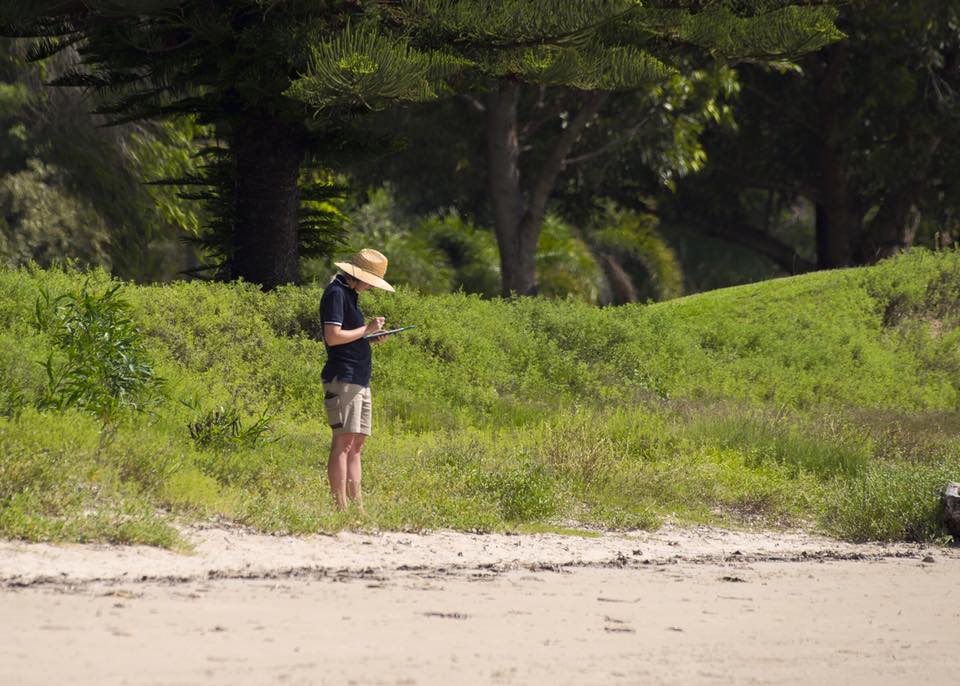
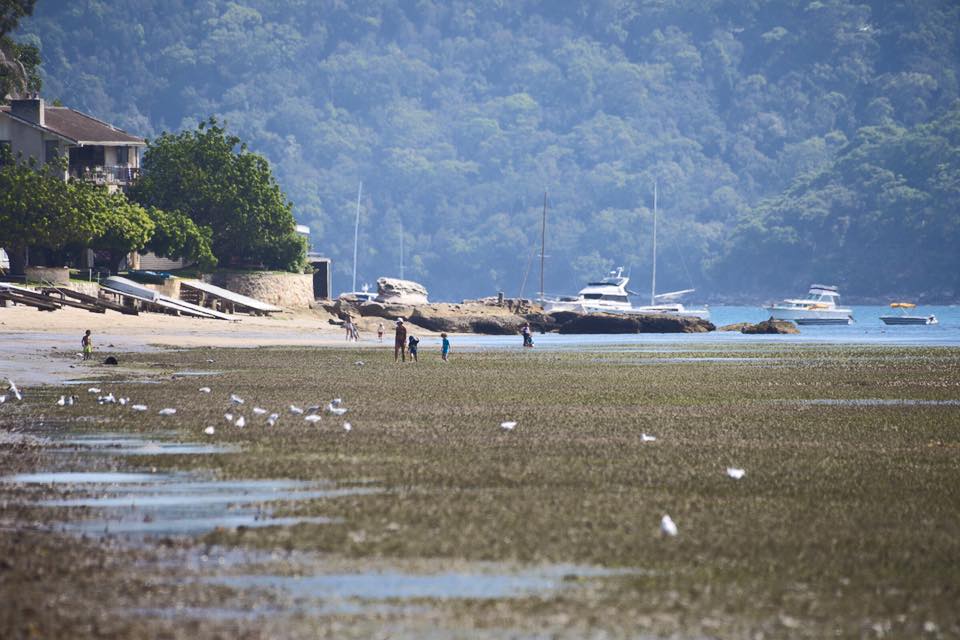
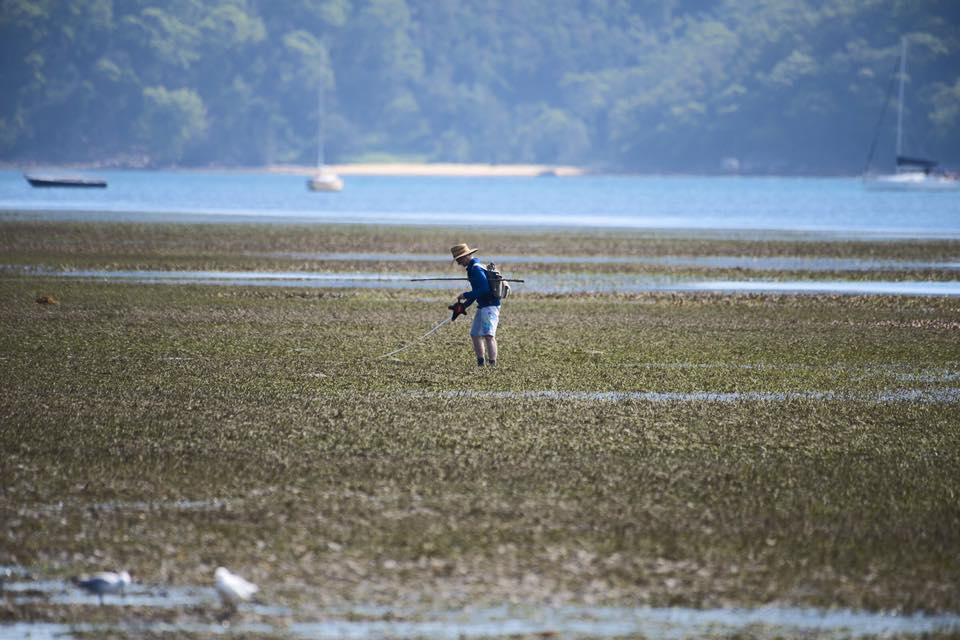
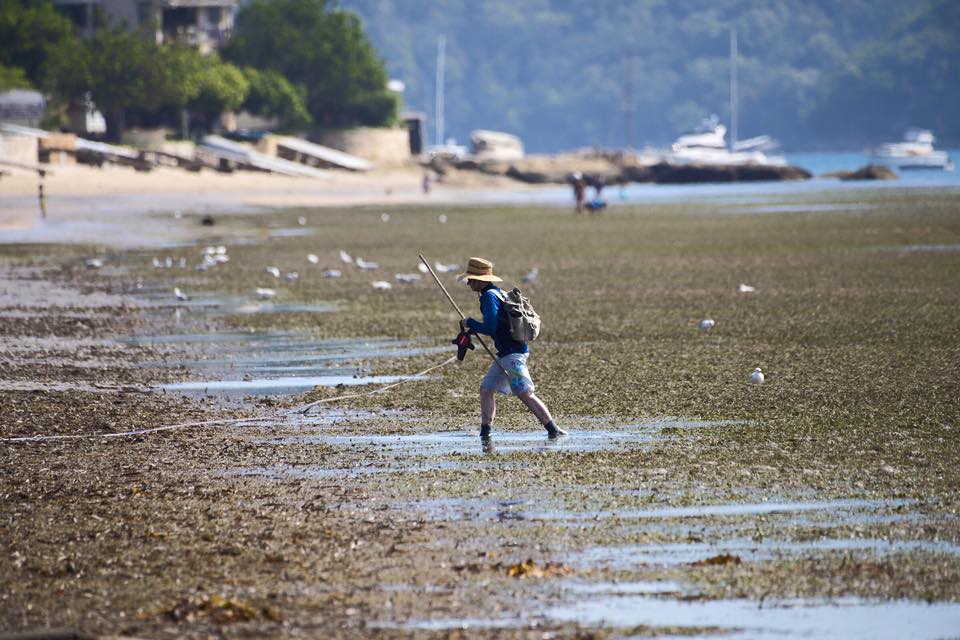
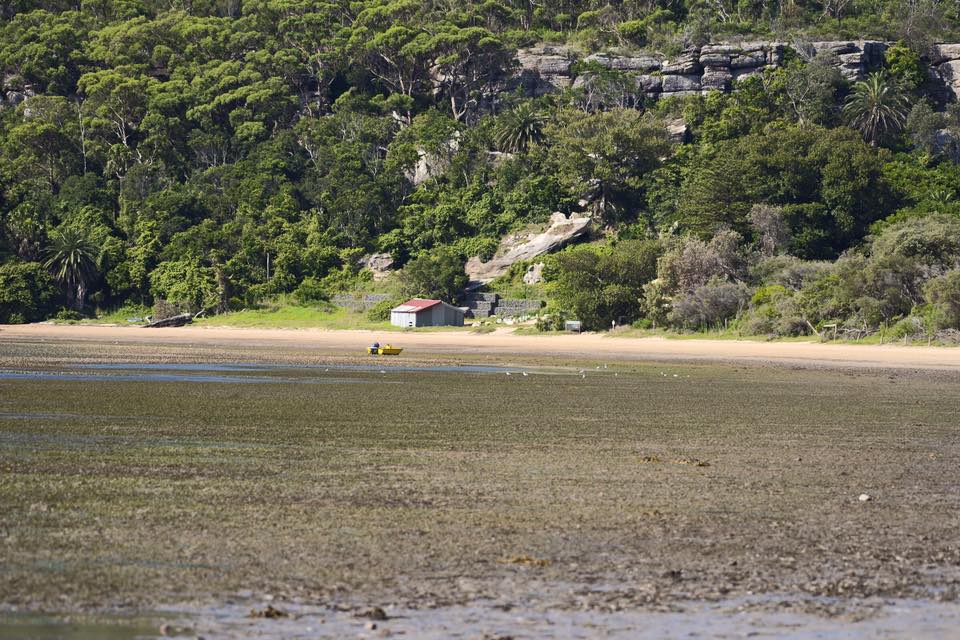
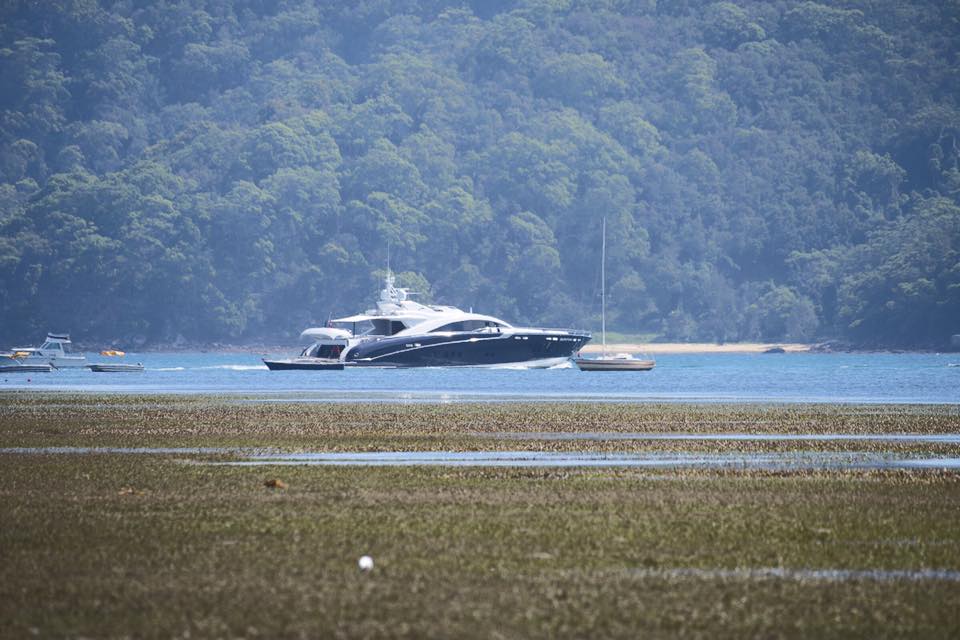
The Conversation's Comic Explainer Republished – Wildlife Panel Only: Eucalyptus Trees
By Pittwater Pathways
Published January 23rd, 2019
It takes a eucalyptus tree more than a hundred years to develop hollows suitable to shelter Aussie animals, and just moments to cut it down - 'The Conversation's' Comic Explainer.
Sincere thanks to all video contributors:
Gang gang cockatoo https://www.youtube.com/watch?v=iEOzu...
Pardelotes https://www.youtube.com/watch?v=8PcX6...
Crimson Rosella https://www.youtube.com/watch?v=M0zVL...
Greater Glider https://www.youtube.com/watch?v=24S4D...
Yellow-bellied gliders https://www.youtube.com/watch?v=NMqRG...
Mountain brush-tail possum https://www.youtube.com/watch?v=zJE8n...
Leadbeater's possum https://www.australiangeographic.com....
Lace monitor https://www.youtube.com/watch?v=QYtmm...
Carpet python https://www.youtube.com/watch?v=2HJcK...
The Timber Getters NFSA https://www.youtube.com/watch?v=wlh6u...
Timber Getting in Western Australia https://www.youtube.com/watch?v=knTYj...
Sulfer Crested Cockatoo pair https://www.youtube.com/watch?v=UYdfm...
Land clearing: Olive Vale, Q, 2014. https://www.youtube.com/watch?v=Uc06o...
Act Now for the Forests https://ccwa.good.do/laborsforestprom...
Superb Parrot https://www.youtube.com/watch?v=Ipux7...
Brown Treecreeper https://www.hbw.com/ibc/video/brown-t...
Tree Felling Mountain Ash https://www.youtube.com/watch?v=e4Gpx...
Squirrel Glider flight http://www.wirraminna.org.au/petaurus...
Canola fields https://www.youtube.com/watch?v=y5Goc...
Tree planting https://www.youtube.com/watch?v=qO_kI...
Cockatoo inspecting a tree hollow https://www.youtube.com/watch?v=3JiOI...
Eucalyptus Regnans https://www.youtube.com/watch?v=3imUS...
Galahs https://www.youtube.com/watch?v=czbuY...
From Toilet To Brickyard: Recycling Biosolids To Make Sustainable Bricks
January 22, 2019: RMIT University
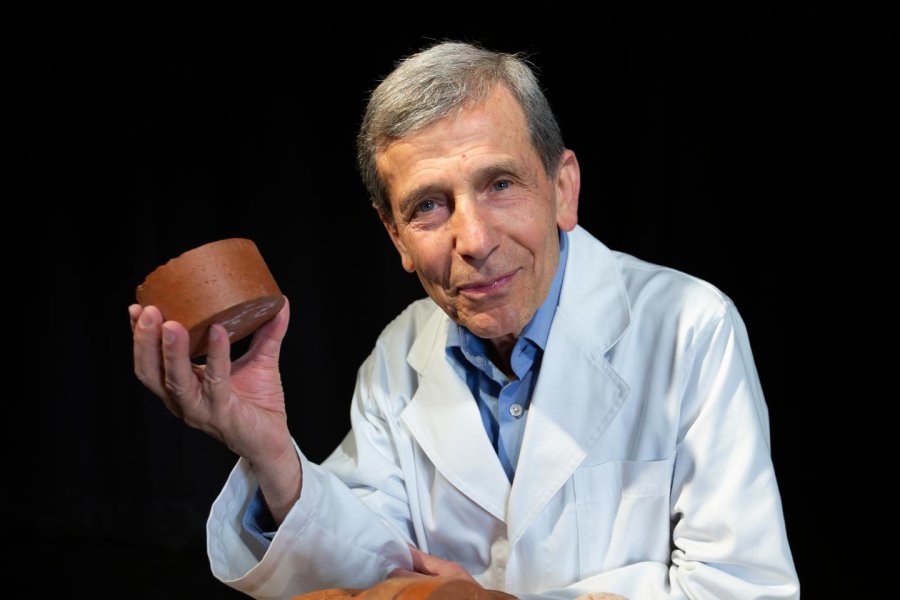
Associate Professor Abbas Mohajerani with a biosolids brick. Credit: RMIT University
How can you recycle the world's stockpiles of treated sewage sludge and boost sustainability in the construction industry, all at the same time? Turn those biosolids into bricks.
Biosolids are a by-product of the wastewater treatment process that can be used as fertiliser, in land rehabilitation or as a construction material.
Around 30% of the world's biosolids are stockpiled or sent to landfill, using up valuable land and potentially emitting greenhouse gases, creating an environmental challenge.
Now a team at RMIT University in Melbourne, Australia, has demonstrated that fired-clay bricks incorporating biosolids could be a sustainable solution for both the wastewater treatment and brickmaking industries.
Published this month in the journal Buildings, the research showed how making biosolids bricks only required around half the energy of conventional bricks.
As well as being cheaper to produce, the biosolids bricks also had a lower thermal conductivity, transferring less heat to potentially give buildings higher environmental performance.
The United States produces about 7.1 million tonnes of biosolids a year, while the EU produces over 9 million tonnes. In Australia, 327,000 tonnes of biosolids are produced annually.
The study found there was a significant opportunity to create a new beneficial reuse market -- bricks.
About 5 million tonnes of the biosolids produced in Australia, New Zealand, the EU, US and Canada currently go to landfill or stockpiles each year. Using a minimum 15% biosolids content in 15% of bricks produced could use up this 5 million tonnes.
Lead investigator Associate Professor Abbas Mohajerani said the research sought to tackle two environmental issues -- the stockpiles of biosolids and the excavation of soil required for brick production.
"More than 3 billion cubic metres of clay soil is dug up each year for the global brickmaking industry, to produce about 1.5 trillion bricks," Mohajerani, a civil engineer in RMIT's School of Engineering, said.
"Using biosolids in bricks could be the solution to these big environmental challenges.
"It's a practical and sustainable proposal for recycling the biosolids currently stockpiled or going to landfill around the globe."
The research examined the physical, chemical and mechanical properties of fired-clay bricks incorporating different proportions of biosolids, from 10 to 25%.
The biosolid-enhanced bricks passed compressive strength tests and analysis demonstrated heavy metals are largely trapped within the brick. Biosolids can have significantly different chemical characteristics, so the researchers recommend further testing before large-scale production.
The biosolids bricks are more porous than standard bricks, giving them lower thermal conductivity.
The research also showed brick firing energy demand was cut by up to 48.6% for bricks incorporating 25% biosolids. This is due to the organic content of the biosolids and could considerably reduce the carbon footprint of brick manufacturing companies.
The results of a comparative Life Cycle Assessment and an emissions study conducted as part of the research confirmed biosolids bricks offered a sustainable alternative approach to addressing the environmental impacts of biosolids management and brick manufacturing.
Abbas Mohajerani, Aruna Ukwatta, Tristan Jeffrey-Bailey, Michael Swaney, Mohtashim Ahmed, Glen Rodwell, Simon Bartolo, Nicky Eshtiaghi, Sujeeva Setunge. A Proposal for Recycling the World’s Unused Stockpiles of Treated Wastewater Sludge (Biosolids) in Fired-Clay Bricks. Buildings, 2019; 9 (1): 14 DOI: 10.3390/buildings9010014
Bird Of The Month
Silvereye, Zosterops lateralis. Warriewood Wetlands
We have so many wonderful photographers and so many bird-lovers in Pittwater that one of our regular very best photographers has suggested we share a 'Bird of the Month' throughout 2019.
We start we a tiny gregarious songbird. This one was photographed in Warriewood Wetlands - bird paradise!
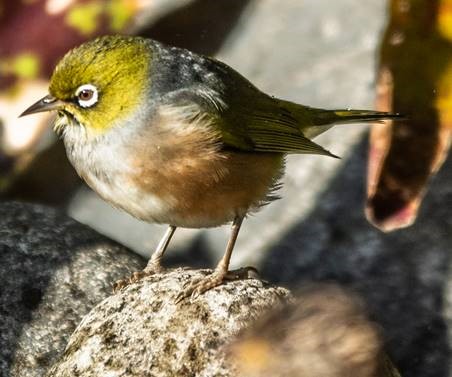
The Silvereye is a very small bird with a conspicuous ring of white feathers around the eye, and belongs to a group of birds known as white-eyes.
Silvereyes feed on insect prey, fruit and nectar.
Silvereye pairs actively defend a small territory. The nest is a small, neatly woven cup of grasses, hair, and other fine vegetation, bound with spider web. It is placed in a horizontal tree fork up to 5m above the ground. The nest is constructed by both sexes, who both also incubate the bluish-green eggs. If conditions are suitable two to three clutches will be raised in a season.
Minimum Size: 10cm
Maximum Size: 12cm
Average size: 11cm
Average weight: 11g
Breeding season: August to February; later in the north
Clutch Size: 2 to 3, rarely 4
Habitat: Coastal heath, shrublands, forests, farms, and urban areas.
Bird description from the book "Birds of Warriewood Wetland Irrawong Reserve - An Introductory Field Guide", published by PNHA
Photo by Michael Mannington, Community Photography
Amazing Nature!!
Cicadas can be heard buzzing this summer and this one was found emerging from its shell. It was hardening its wings this morning, and a rare sight to see both the cicada and its skin. It took off on its travels around 8am to continue on its life’s journey which started underground from anywhere between 9 months and 7 years, depending on the species!
Photo and information courtesy the Pittwater Natural Heritage Association (PNHA)
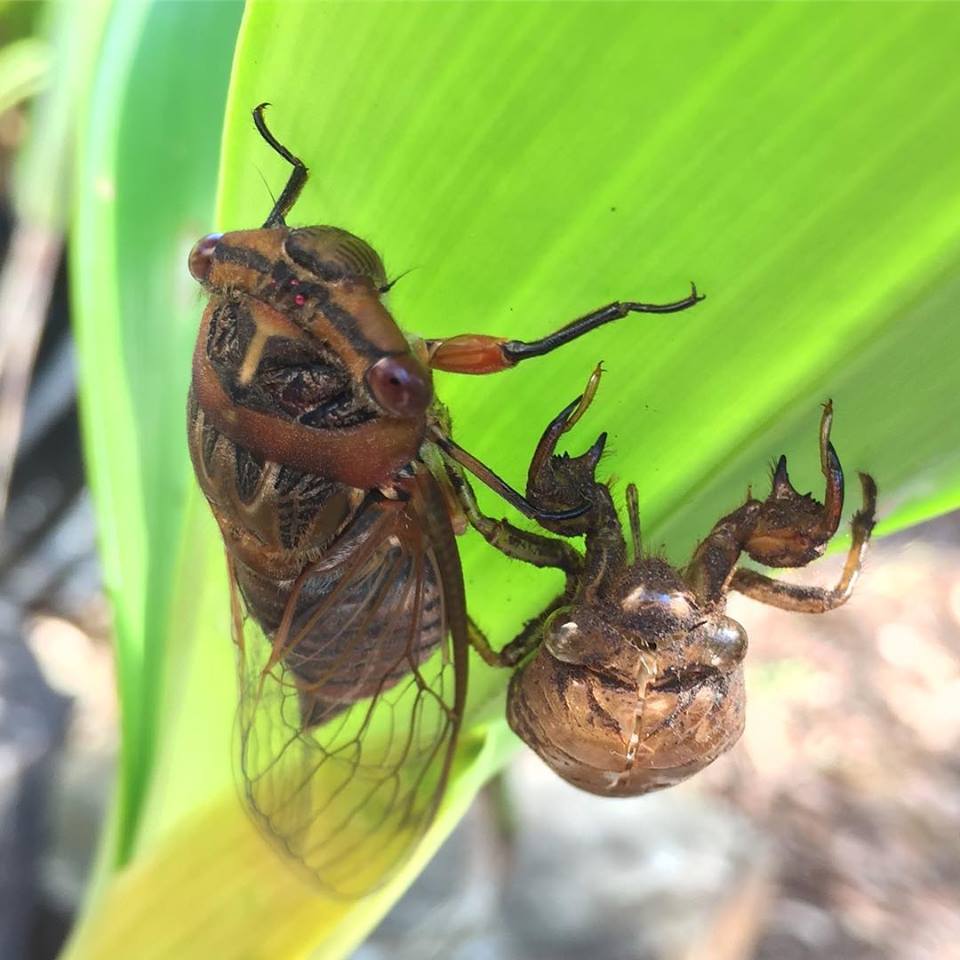
Mona Vale Surf Life Saving Club Mates Against Melanoma Entry
Published January 19, 2019
Mona Vale SLSC shows the world how we are sun safe and watch out for our mates to protect against melanoma. Visit www.monavaleslsc.org.au and Mates Against Melanoma www.mam.org.au
Wallarah 2 Coal Mine Approval Underneath Central Coast Drinking Water Catchment Condemned
January 22, 2019: Media Release - Lock the Gate
Federal Environment Minister Melissa Price’s decision on Friday (Jan 18) to give the go ahead to the Wallarah 2 Coal Mine will harm residents of the Central Coast and threatened wildlife, according to Lock the Gate Alliance.
It’s been estimated that the proposed mine will result in the loss of up to 300 ML a year from the Central Coast's drinking water catchment during its 28 year lifespan, though there is some uncertainty about the quantum of that loss.
It would extract five million tonnes of thermal coal per annum for export, resulting in total greenhouse gas emissions of more than 264 million tonnes of CO2. 1.
Proponent KORES, which plans to export the coal for power generation, proposes to construct a pipeline to deliver compensatory water to the Central Coast Council, but has not demonstrated how this could be achieved.
Lock the Gate Hunter regional coordinator David Burgess said the approval was an indication the Australian Government’s priorities are still not sufficiently focused on water conservation.
“We condemn this reckless and short-sighted decision. Environment Minister Melissa Price is acting like a drip in approving this water-draining project,” he said.
“This summer is showing us how precious water is and how disastrous it can be and how vulnerable we are when it runs dry. It’s reckless and unacceptable for a coal mine to undermine the water for the growing cities of the NSW Central Coast, which has suffered from water shortages in the past.”
The NSW Government approved the project last year, however that approval is now the subject of a judicial review taken by local group the Australian Coal Alliance which was heard in November. The judgement is still pending.
Mr Burgess said, “Concerned citizens across the country will support the people of the Central Coast in opposing this project.
“At a time like this, our governments should not be putting precious water resources at risk, especially not for new thermal coal mines.”
1. Source: https://www.edonsw.org.au/wallarah2_aca
A Survey On Ticks And Wildlife In The Northern Beaches
The University of Sydney is conducting a study to better understand how residents and their pets are encountering ticks and wildlife in their backyards. We invite all Northern Beaches residents to participate in our survey.
Coastal bushland remnants and other green spaces across the Northern Beaches are home to a variety of native plants and animals. They also provide a place for residents to enjoy their favourite outdoor pastimes. Paralysis ticks (Ixodes holocyclus) are common in the Northern Beaches and feed on a wide range of animal hosts during their life cycle. Understanding the complex relationship between ticks and their host species is an essential part of our research. The information we gain will contribute to our growing knowledge of ticks and will guide future research efforts.
We aim to identify:
- Areas where people are encountering ticks more than others (tick 'hotspots'),
- Backyard and landscape features that may influence tick presence, and
- Wildlife using backyards and how this might or might not influence tick occurrence
To meet these aims, it is important for you to provide a street address. If you would prefer not to, we ask that you provide your street name and nearest cross street. It is important for us to create a map of tick encounters to understand what landscape features might influence tick presence and where to target future research.
All identifying information will be removed from any data presentations.
The survey should only take approximately 10 minutes to complete and is voluntary.
If you have any questions about the project, please contact PhD candidate Casey Taylor on 02 9351 3189 or casey.taylor@sydney.edu.au. This project is being undertaken by the University of Sydney in association with Northern Beaches Council.
Your participation is greatly appreciated.
This research has been approved by the University of Sydney Human Ethics committee. (Approval no: 2018/157)
Avalon Boomerang Bags 2019 Start Date +
WEEKLY WORKSHOPS CONTINUE IN 2019
TUESDAY 5TH February will be our first day back.
WORKSHOPS are held Tuesdays during the school term
at the Avalon Recreation Centre 11.30 - 3.30pm
Everyone is welcome; come for an hour or come for all 4, we'll even provide a cuppa and guaranteed laughs. Non-sewers also very useful.
Pop in with your excess fabric donations or spare enviro bag donations. We also sell our very handy Boomerang Bag coffee cups, stainless steel drink bottles and other enviro products and of course, our "Bought to Support" bags.
Our Christmas Celebration was truly that - a celebration of all that we have achieved together. We've made lots of bags, reduce much fabric from landfill, helped Avalon move towards using less plastics, made friendships and been a small cog in the wheel doing our bit for a better environment tomorrow.

Thanks to all those who helped organise - the food, the drinks, the 'real' glasses and "real" plates, the fabric serviettes, the fruit mince pies and the Christmas "star" decoration activity....a lovely day.
Recognition
Round of applause and congratulations to our local 2018 Eco Heroes - our very own Avalon Boomerang Bag volunteer Row Handley, and Manly Boomerang Bag coordinator Jude Furniss. Both of these incredible women are part of many environmental groups making a huge impact in the local community and for the conservation of the environment particularly our oceans and waters ways. Thank you both and our best wishes for your projects in 2019 and beyond.
Got time to sew over the holidays - need fabric ????
Reply to this email or call Robyn 0412 314 754
Household Chemical CleanOut Schedule Now Available
January 23, 2019: NSW EPA
The Household Chemical CleanOut program is ready to kick off another year adding to the over 14,000 tonnes of household hazardous waste that have already been safely collected and disposed.
The January to June 2019 Household Chemical Cleanout schedule is now available online, and the NSW EPA is encouraging householders to visit www.cleanout.com.au to find their nearest event.
Household Chemical CleanOut is a free service available for the disposal of a range of common household chemicals, many of which could cause harm to the environment if not disposed of properly.
Items such as paint, pesticides, motor oils, pool chemicals and other wastes such as batteries, fluorescent tubes and gas bottles can all be recycled at local Chemical CleanOut events.
Since the CleanOut program started in March 2003, over 14,000 tonnes of household hazardous waste that have already been safely collected and disposed.
This great result has been achieved through the support of over 312,000 households bringing along their old and unwanted household hazardous materials to be safely disposed and recycled.
Disposing of household chemicals safely will reduce the risk of hazardous chemicals and toxic elements ending up in landfill or contaminating our waterways and soils.
Many of these materials can be recycled or reused, so not only will residents be helping to reduce the risk of pollution but are also helping in resource recovery efforts.
People can bring along household quantities of:
- Paint, strippers and varnishes
- Pesticides, herbicides and poisons
- Solvents and household cleaners
- Motor oils, fuels and fluids
- Batteries
- Gas bottles
- Pool chemicals
- Fluorescent globes and tubes.
Tips on transporting your chemicals safely:
- Travel with your car windows down if carrying flammable or odorous materials
- Keep products in their original containers
- Always store containers upright and ensure that all lids are tightly secured
- Keep corrosive chemicals, such as battery acid, away from poisons
- Keep products in a cool, dry place, out of reach of children
- Double wrap old liquid containers in plastic bags to prevent leaking
- Transport in crates, boxes or buckets.
For more information or to find out when the next CleanOut closest to your home is, visit www.cleanout.com.au or call the Environment Line on 131 555.
Community CleanOut Event
Sat 22, Sun 23 June 2019: 9am - 3:30pm
Mona Vale Beach Car Park, Surfview Road, Mona Vale
Abrahams Calls For Unified Political Opposition To Oil And Gas Rigs Off Our Coast
Monday, January 13, 2019
MEDIA RELEASE
The Independent candidate for Robertson and local businessman, David Abrahams, today called for an end to all oil and gas exploration off the beaches of the Central Coast.
In an unusual development, Abrahams called on all parties for joint political action to stop further exploration for oil and gas and the revocation of the Federal Government’s Petroleum Exploration Permit 11 [PEP 11].
Mr Abrahams said, “No-one wants ruined fishing grounds and oily beaches, no-one wants oil-soaked pelicans, no-one wants a ruined surfing environment, no-one wants dead whales and dolphins on our conscience”.
Mr Abrahams asked, “If none of us want these horrors, why not join together and show the Central Coast community that politicians can work together for the community and need not always be at each others’ throats competing, fighting, scoring cheap points."
Mr Abrahams argued, “I would like to see a joint deputation to the Prime Minister, comprising Lucy Wicks [Liberal], Ann Charlton [Labor], Cath Connor [Greens] and myself [Independent]."
“The reasons for trashing PEP 11 are obvious”, said Mr Abrahams. “ First, the history of oil exploration is littered with accidents that ruin environments for decades. Second, Big Oil is a big contributor to perilous Global Warming and Australia needs to stop being the international pariah and start being a future orientated smart nation that leads, not follows. Third, the Federal Committee overseeing the licence conditions NOPSEMA is deliberately preventing Central Coast residents’ views being taken into account by not holding any community consultations on the Central Coast. Instead holding briefings in difficult to access locations both in Newcastle and Sydney.”
Mr Abrahams said, ”The Central Coast has much to lose with oil rigs dotted along our beaches and coast. PEP 11 is a bad plan. I suggest a good plan … a rare and unified political unity in defence of Central Coast interests would be a powerful act of community-based concern. Let’s do it.”
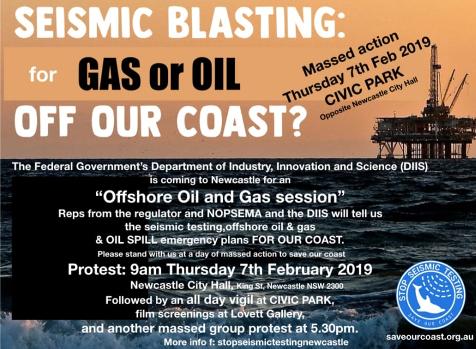
Sonic Sea Screening At Avalon Cinema: Feb 13
Living Ocean have initiated this campaign to raise awareness that 3D seismic testing is mooted for this year off our coastline and the public needs to be made aware of what that involves to realise what is at stake.
They will have a balanced panel of experts to discuss the movie and also the issues for all life in the area from any effects of the testing. Also the reality of offshore gas fields and how it could impact fishing, tourism, whale watching plus the hazards that failure of any equipment resulting from the industrialisation of rigs just offshore could produce.
Living Ocean successfully campaigned with NOPSEMA against 2D testing offshore scheduled for peak northern migration of Humpback whales last year. However small scale 2D testing went ahead anyway in 2018.
Get your ticket HERE ($11.64)
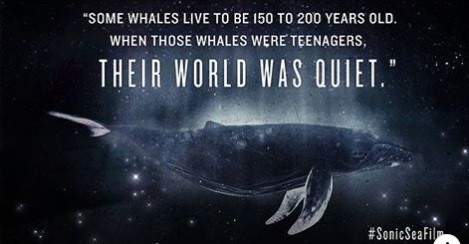
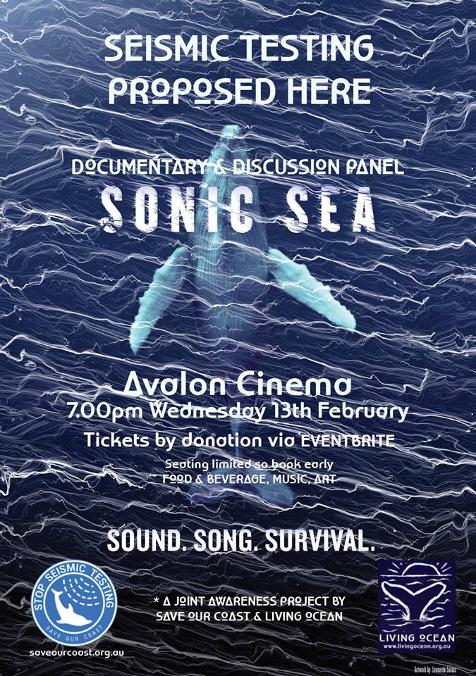
Friends Of Narrabeen Lagoon Catchment February 2019 Forum
7pm Monday Feb 25 2019
Coastal Environment Centre, Pelican Path,
Lake Park Road, Narrabeen
Possums, Gliders and Fauna Surveys
Jayden Walsh and Brad Law will shine a light on the behaviour of our native animals — particularly possums (including the endangered pygmy possum) and gliders.
Brad Law, who is an expert on Eastern Pygmy Possums, will also give some insights about local fauna surveys.
Make sure you put February 25 in your diary and , so that you don’t miss out, book your ticket early by emailing Judith Bennett at - email@narrabeenlagoon.org.au
Bush Regeneration
Belrose area - Thursday mornings
Belrose area - Weekend mornings
Contact: Conny Harris 0432 643 295
Wheeler Creek - Wed mornings 9-11am
Contact: Judith Bennett 0402 974 105
Council Issues Warning To Beware Of Suspect Tree Operators
January 2019: NBC
Northern Beaches Council is warning the community to be wary of unscrupulous tree lopping operators who flout the law, making residents liable for thousands of dollars of fines for their illegal works.
Ray Brownlee said Council is aware of rogue tree tradesman currently door knocking in Avalon and offering to cheaply remove or trim large trees without Council permission. This follows a spate of similar incidents at around the same time last year.
“Our community is passionate about trees and at Council we are committed to protecting as much of our tree canopy as possible,” Mr Brownlee said.
“Most trees over 5m high are protected and residents need Council approval to prune more than ten percent of the tree or remove it. This ensures we maintain the green environment that is so valued by our community.
“Without consent to prune or remove the trees, residents can attract thousands of dollars in fines.
“If in doubt, residents should contact Council to ensure they, or those they contract, are working within the law.”
Mr Brownlee said that a good tree operator will be knowledgeable about what is permitted, be appropriately insured and qualified to undertake the work.
“If an operator can’t demonstrate they meet these requirements, residents should think twice about employing them to do the job in case they ended up being liable for their illegal activities.
“If the work is illegal, then that leaves the property owner at risk of being fined because the contractors have usually left with no traceable contact information,” Mr Brownlee said.
Property owners who are approached by contractors should contact Council first, to check that the work complies with Council’s tree controls or visit our website. Residents can also contact NSW Fair Trading on 13 32 20.
Visit:
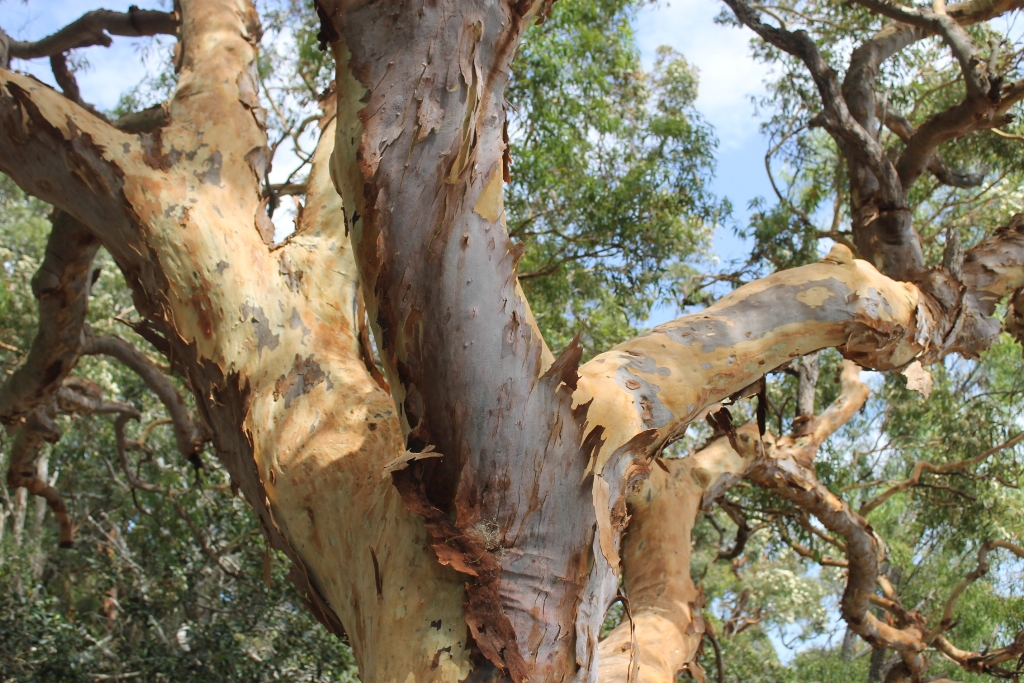
Woodside Scarborough Project: Have Your Say
Oil and gas company Woodside Energy has applied for federal approval for dredging and pipeline construction in waters near the Western Australian Dampier Archipelago marine reserves.
The company sought the approval as part of its proposed Scarborough gas project, an offshore development about 380km from the Burrup peninsula that would use a 430km pipeline to transport gas to its existing Pluto liquefied natural gas facility on the peninsula.
A development proposal for the state waters component of the project was published by the federal environment department on Christmas Eve. Under environment protection and biodiversity conservation regulations the public has only 10 business days to comment once a referral is published.
The Refrral was listed on the EPBC website on December 24th, 2018. Following a public backlash, the end date for having your say was then extended by Federal Environment Minister Melissa Price until January 31st.
Other components of the Scarborough project, including those in commonwealth waters, will be the subject of separate applications to other government agencies, including the National Offshore Petroleum Safety and Environmental Management Authority.
The proposal includes the dredging of up to 2,781,700 m3 of the sea floor of Mermaid Sound – up to 1,612,600 m3 of which will be located in state waters – for the installation of 32.7km of steel pipeline adjacent to an existing trunkline.
From the document:
The proposed extent of physical and operational elements are detailed below:
-Trenching, pipelay and backfill activities for the installation of the trunkline including: Dredging of maximum 2,781,700 m3 during the trenching for the trunkline, of which a maximum of 1,612,600 m3 will be in State Waters. The volumes would be confirmed during detailed engineering design.
Installation of the pipe up to Kilometre Point (KP) 0, 1.5m above Highest Astronomical Tide (HAT), the exact location may vary slightly but will remain within the referred proposal development envelope. A 32 inch carbon steel trunkline 32.7 kilometres long installed in a trench around 2–4.3 metres deep and up to 30 m wide. The trench would be backfilled with sand and/or rock material for stabilisation purposes along the trunkline as required.
Concrete blocks backfilled with trenching material may also be required to provide reaction forces. These would be laid within the trench footprint and retained in place to maintain the reaction forces once the pipe is laid. The trench backfilling operations will cover these blocks on completion of the construction works.
-The use of existing spoil grounds within State Waters for disposal of dredged sediments. Spoil from the trunkline dredging operations will be placed in a combination of the spoil grounds listed below. The final spoil ground locations are subject to further engineering design and consultation with relevant stakeholders.
- Spoil Ground A/B (restricted to backhoe works) and 2B located in State Waters.
- Spoil Ground 5A located in Commonwealth Waters (Provided for information only but not assessed as part of this referral)
-The potential use of an existing borrow ground within State Waters, to obtain sediment for trunkline stabilisation activities.
Sand and Rock materials may be required to assist with trunkline stabilisation. Sand is proposed to be obtained from borrow ground locations located in either State or Commonwealth waters. Rocks would be obtained from domestic or international sources.
-The installation of temporary facilities along the shoreline at the Pluto LNG Facility to facilitate the installation of the trunkline in shallower depth and the connection to the Facility.
A temporary groyne around 100 metres long would be constructed on the shoreline between the pre-excavated trench and the Pluto jetty to allow excavating equipment to access and excavate the rock berm currently covering the trench. A suitable storage location will be required for the excavated rock assuming that this rock will be used to reinstate the shore crossing rock berm following trunkline installation. Piles may also be required to anchor the nearshore pipelay barge. Piles are required due to the proximity to the Pluto trunkline which may prevent the use of anchors for the pipelay activities. It’s estimated a total of 8 driven piles may be required.
Space would be required at the shore crossing location for temporary offices, cranes and other equipment for the shore pull of the trunkline.
Woodside states it believes the proposal does not require a full assessment under the Environment Protection and Biodiversity Conservation Act because it “does not consider that the elements of the proposal that have been assessed, involve an action that is likely to have a significant impact upon matters of national environmental significance (MNES) or other protected matters”.
The document says the company had assessed the potential for direct and indirect impacts on the Dampier Archipelago, located 1.6km from the proposed pipeline at its nearest point, and found potential for indirect impacts on water quality as a result of dredging.
The proposal also states marine species could be affected, including the endangered loggerhead turtle which has been found in locations that intersect with some of the development area. Direct risks included “vessel strikes and/or entrainment during dredging”.
Invitations for public comment: EPBC
Ensuring your comments are effective
- Clearly reference the referral (EPBC number and proposal title) in your submission.
- State clearly whether, and how, you believe the proposal would have a significant impact on matters protected by the EPBC Act. The Minister, or their delegate, can only take into account comments, concerns or issues in respect to the specific matters of national environmental significance or matters protected under the EPBC Act. Be specific by stating which aspects of the proposal would impact on matters (e.g. a particular listed species or heritage value).
- If you believe the information in the referral is misleading or incorrect, you should state the reasons why and provide correct information, if available.
- Give the source of any key information used in reaching your conclusion.
- Provide clear contact details if the Department needs to get in touch with you to seek clarification.
- Provide comments by the due date. If your comments are going to be late, please contact the Department before the due date, and advise of your intention to provide comment, and the date the comment will be provided. The Department will advise you if the comments can be accepted.
Please note: Submissions may be subject to release under the Freedom of Information Act 1982, and may be provided to third parties for procedural fairness purposes (also known as natural justice).
Public submissions are not normally confidential, however if you wish your submission to be treated by the Department as confidential, please mark it clearly as 'confidential' and provide your reasons for it to be considered as such. The Department will use its best endeavours to deal with the submission accordingly but this does not make it automatically exempt from release.
If you require further information contact the Referrals Gateway on 02 6274 2496 or email epbc.referrals@environment.gov.au.
Submitting your comments
Please send your comments on referrals quoting the reference number and title of the referral to:
Or post (allowing for the public comment due date):
Referrals Gateway
Assessment & Governance Branch
Department of the Environment and Energy
GPO Box 787
Canberra ACT 2601
Woodside Scarborough docs at: http://epbcnotices.environment.gov.au/invitations/
Reference No. 2018/8362
Title of referral: WOODSIDE ENERGY LTD./Mining/Seabed within State Waters and within Port of Dampier limits/Western Australia/Scarborough Development nearshore component, NWS, WA
On Facebook And Twitter Your Privacy Is At Risk -- Even If You Don't Have An Account, Study Finds
January 23, 2019
A new study shows that privacy on social media is like second-hand smoke. It's controlled by the people around you.
Individual choice has long been considered a bedrock principle of online privacy. If you don't want to be on Facebook, you can leave or not sign up in the first place. Then your behaviour will be your own private business, right?
The new study presents powerful evidence that the answer to that question is no.
The team of scientists, from the University of Vermont and the University of Adelaide, gathered more than thirty million public posts on Twitter from 13,905 users. With this data, they showed that information within the Twitter messages from 8 or 9 of a person's contacts make it possible to predict that person's later tweets as accurately as if they were looking directly at that person's own Twitter feed.
The new study also shows that if a person leaves a social media platform -- or never joined -- the online posts and words of their friends still provide about 95% of the "potential predictive accuracy," the scientists write, of a person's future activities -- even without any of that person's data.
Looked at from the other direction, when you sign up for Facebook or another social media platform" you think you're giving up your information, but you're giving up your friends' information too!" says University of Vermont mathematician James Bagrow who led the new research.
The study was published January 21 in the journal Nature Human Behavior.
Privacy Matters
The research raises profound questions about the fundamental nature of privacy -- and how, in a highly networked society, a person's choices and identity are embedded in that network. The new study shows that, at least in theory, a company, government or other actor can accurately profile a person -- think political party, favourite products, religious commitments -- from their friends, even if they've never been on social media or delete their account.
"There's no place to hide in a social network," says Lewis Mitchell, a co-author on the new study who was a post-doctoral researcher at the University of Vermont and is now senior lecturer in applied mathematics at the University of Adelaide in Australia.
How information moves on social media platforms, like Facebook and Twitter, has become a powerful factor in protest movements, national elections, and the rise and fall of commercial brands. Along the way, people on these platforms reveal massive amounts of information about themselves -- and their friends.
However, scientists have not known if there is a fundamental limit to how much predictability is contained within this tidal wave of data. In the new study, the scientists used their analysis of Twitter writings to show that there is a mathematical upper limit on how much predictive information a social network can hold -- but that it makes little difference if the person being profiled, or whose behaviour is being predicted, is on or off that network when their friends are on the network.
"You alone don't control your privacy on social media platforms," says UVM professor Jim Bagrow, "Your friends have a say too."
James P. Bagrow, Xipei Liu, Lewis Mitchell. Information flow reveals prediction limits in online social activity. Nature Human Behaviour, 2019; DOI: 10.1038/s41562-018-0510-5
How Hot Are Atoms In The Shock Wave Of An Exploding Star?
January 22, 2019
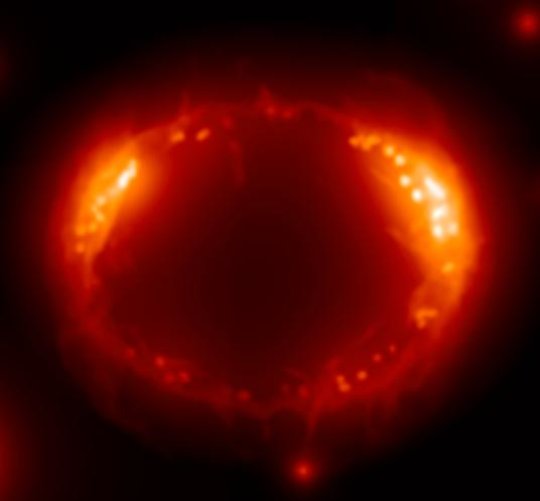
An international team of researchers combined observations of nearby supernova SN1987A, made with NASA's Chandra X-Ray Observatory, with simulations to measure the temperature atoms in the shock wave that occurs from the explosive death of a star. This image superimposes synthetic X-ray emission data onto a density map with from the simulation of SN1987A. Credit: Marco Miceli, Dipartimento di Fisica e Chimica, Università di Palermo, and INAF-Osservatorio Astronomico di Palermo, Palermo, Italy
A new method to measure the temperature of atoms during the explosive death of a star will help scientists understand the shock wave that occurs as a result of this supernova explosion. An international team of researchers, including a Penn State scientist, combined observations of a nearby supernova remnant -- the structure remaining after a star's explosion -- with simulations in order to measure the temperature of slow-moving gas atoms surrounding the star as they are heated by the material propelled outward by the blast.
The research team analyzed long-term observations of the nearby supernova remnant SN1987A using NASA's Chandra X-ray Observatory and created a model describing the supernova. The team confirmed that the temperature of even the heaviest atoms -- which had not yet been investigated -- is related to their atomic weight, answering a long-standing question about shock waves and providing important information about their physical processes. A paper describing the results appears January 21, 2019, in the journal Nature Astronomy.
"Supernova explosions and their remnants provide cosmic laboratories that enable us to explore physics in extreme conditions that cannot be duplicated on Earth," said David Burrows, professor of astronomy and astrophysics at Penn State and an author of the paper. "Modern astronomical telescopes and instrumentation, both ground-based and space-based, have allowed us to perform detailed studies of supernova remnants in our galaxy and nearby galaxies. We have performed regular observations of supernova remnant SN1987A using NASA's Chandra X-ray Observatory, the best X-ray telescope in the world, since shortly after Chandra was launched in 1999, and used simulations to answer longstanding questions about shock waves."
The explosive death of a massive star like SN1987A propels material outwards at speeds of up to one tenth the speed of light, pushing shock waves into the surrounding interstellar gas. Researchers are particularly interested in the shock front, the abrupt transition between the supersonic explosion and the relatively slow-moving gas surrounding the star. The shock front heats this cool slow-moving gas to millions of degrees -- temperatures high enough for the gas to emit X-rays detectable from Earth.
"The transition is similar to one observed in a kitchen sink when a high-speed stream of water hits the sink basin, flowing smoothly outward until it abruptly jumps in height and becomes turbulent," said Burrows. "Shock fronts have been studied extensively in the Earth's atmosphere, where they occur over an extremely narrow region. But in space, shock transitions are gradual and may not affect atoms of all elements the same way."
The research team, led by Marco Miceli and Salvatore Orlando of the University of Palermo, Italy, measured the temperatures of different elements behind the shock front, which will improve understanding of the physics of the shock process. These temperatures are expected to be proportional to the elements' atomic weight, but the temperatures are difficult to measure accurately. Previous studies have led to conflicting results regarding this relationship, and have failed to include heavy elements with high atomic weights. The research team turned to supernova SN1987A to help address this dilemma.
Supernova SN1987A, which is located in the nearby constellation called the Large Magellanic Cloud, was the first supernova visible to the naked eye since Kepler's Supernova in 1604. It is also the first to be studied in detail with modern astronomical instruments. The light from its explosion first reached earth on February 23, 1987, and since then it has been observed at all wavelengths of light, from radio waves to X-rays and gamma waves. The research team used these observations to build a model describing the supernova.
Models of SN1987A have typically focused on single observations, but in this study, the researchers used three-dimensional numerical simulations to incorporate the evolution of the supernova, from its onset to the current age. A comparison of the X-ray observations and the model allowed the researchers to accurately measure atomic temperatures of different elements with a wide range of atomic weights, and to confirm the relationship that predicts the temperature reached by each type of atom in the interstellar gas.
"We can now accurately measure the temperatures of elements as heavy as silicon and iron, and have shown that they indeed do follow the relationship that the temperature of each element is proportional to the atomic weight of that element," said Burrows. "This result settles an important issue in the understanding of astrophysical shock waves and improves our understanding of the shock process."
Marco Miceli, Salvatore Orlando, David N. Burrows, Kari A. Frank, Costanza Argiroffi, Fabio Reale, Giovanni Peres, Oleh Petruk, Fabrizio Bocchino. Collisionless shock heating of heavy ions in SN 1987A. Nature Astronomy, 2019; DOI: 10.1038/s41550-018-0677-8
More Medical Help To Boost Music Party Safety
January 22, 2019: NSW Health
Revellers will see an increased medical presence at music festivals this long weekend and more explicit messaging, as new harm reduction measures are rolled out.
Health Minister Brad Hazzard said the NSW Government will have more critical care doctors, nurses and paramedics on the ground and a blunt warning for audiences.
“Doctors, paramedics and a young drug overdose survivor have lent their support to this campaign, reminding people to get help quickly and one pill can harm or even kill you,” Mr Hazzard said.
“Tragically, we have had five deaths at festivals in six months, with MDMA implicated in all of them, so we have strengthened our emergency manpower and messaging."
“The reality is you are dicing with death with illicit drugs, and even with the best emergency specialists available, there is no guarantee if you overdose that you will survive."
The media campaign will play across social media platforms and at all three music events this weekend, reminding people to get help quickly if they feel unwell.
Chief Health Officer, Dr Kerry Chant said in addition to more medics on the ground, chill out zones are available so people can cool down, rehydrate, and check in with mates.
“If you or a friend is confused, dizzy, too hot, vomiting or has a fast heart rate, get to the medical tent fast. You won’t be punished for getting medical help,” Dr Chant said.
“MDMA alone can be a killer but mixing MDMA with alcohol and other drugs or taking multiple doses of MDMA, increases your risk of serious harm.
“When you take MDMA your body temperature will increase and can cause your organs to shut down. Dancing and hot weather can make this happen more quickly.”
For more information, please refer to NSW Health’s Guidelines for Music Festival Event Organisers: Music Festival Harm Reductionand social media harm reduction campaign
Orthodontics No Guarantee Of Long-Term Oral Health
January 22, 2019: University of Adelaide
A commonly held belief among the general public is orthodontic treatment will prevent future tooth decay. Research undertaken at the University of Adelaide has found that this is not the case.
Published in the journal Community Dentistry and Oral Epidemiology the study, conducted by Dr Esma J Dogramaci and co-author Professor David Brennan from the University's Adelaide Dental School, assessed the long-term dental health of 448 people from South Australia.
"The study found that people who had orthodontic treatment did not have better dental health later in life," says Dr Dogramaci.
"Patients often complain about their crooked teeth and want braces to make their teeth straight so they can avoid problems, like decay, in the future."
The study, which followed people from the age of 13 until they were 30, recorded patients' dental health behaviours and the number of decayed, missing or filled teeth.
"By the age of 30 over a third of participants had received orthodontic treatment," says Dr Dogramaci.
"There is a misconception amongst patients that orthodontic treatment prevents tooth decay, but this is not the case."
The cost of orthodontic treatment, in which crooked teeth are realigned using braces worn over several years, varies from approximately AUS$3000 to $13,000 according to the severity of the problems. Braces are becoming increasingly popular, with one in five patients being adults. The global orthodontics market is predicted to be worth more than US$6 billion by 2023.
"Evidence from the research clearly shows that people cannot avoid regularly brushing their teeth, good oral hygiene and regular dental check-ups to prevent decay in later life," says Dr Dogramaci.
"Having your teeth straightened does not prevent tooth decay in later life."
The research was carried out by the Adelaide Dental School, and the Australian Research Centre for Population Oral Health (ARCOPH), the University of Adelaide.
Esma J. Doğramacı, David S. Brennan. The influence of orthodontic treatment on dental caries: An Australian cohort study. Community Dentistry and Oral Epidemiology, 2019; DOI: 10.1111/cdoe.12446
Emerging Significance Of Gammaherpesvirus And Morbillivirus Infections In Cats
January 22, 2019
Emerging infectious diseases comprise a substantial fraction of important human infections, with potentially devastating global health and economic impacts. A 2008 paper in Nature described the emergence of no fewer than 335 infectious diseases in the global human population between 1940 and 2004. In the veterinary field, just as in the medical field, advanced molecular techniques and sophisticated computer-based algorithms for genetic sequence assembly and analysis have revolutionised infectious disease research. They have also raised important questions, as the potential pathogenic role of novel viruses can be difficult to determine.
What is well understood is that novel viruses may contribute to diseases that are major causes of feline morbidity and mortality, including cancer and chronic kidney disease (CKD). A state-of-the-art review article published in the Journal of Feline Medicine and Surgery this month focuses on two novel viruses that have the potential to negatively impact feline health and welfare globally -- gammaherpesvirus and morbillivirus. Writing for an international audience of veterinary practitioners and feline researchers, an expert group of feline virologists, clinicians and pathologists from Australia, New Zealand and the USA, led by Dr Julia Beatty, of the University of Sydney, discusses aspects related to virus discovery, epidemiology, pathogenesis, diagnosis, prevention and zoonotic potential.
For many years, domestic cats were identified as the natural host for just a single herpesvirus, feline herpesvirus 1, which is a common cause of ocular and upper respiratory tract disease. In 2014, a targeted virus discovery programme, prompted by the clinical observation that cats develop the types of cancer that, in humans, are caused by gammaherpesviruses, identified Felis catus gammaherpesvirus 1 (FcaGHV1). The first gammaherpesvirus known to infect domestic cats, FcaGHV1 is widely endemic; studies suggest that cats can be infected from 2 months of age, and that most adult cats are persistently infected. What is not yet known is whether FcaGHV1 has any pathogenic role in cats. Comparative evidence, however, suggests that while gammaherpesvirus infections typically remain subclinical, in certain circumstances, often after many years of infection, they can cause severe and frequently fatal disease. For example, Epstein-Barr virus, a gammaherpesvirus that infects over 90% of adult humans and is usually innocuous, occasionally causes lymphomas, carcinomas and other cancers. Dr Beatty and her coauthors hypothesise that if FcaGHV1 is pathogenic in cats, it is likely that disease would similarly be only a rare outcome of chronic infection, with most infected animals remaining asymptomatic. Given how widely distributed FcaGHV1 is, the total number of potential disease-affected animals could nevertheless be sizeable.
Feline morbillivirus (FeMV) was first reported in domestic cats in Hong Kong and China in 2012, and has since has been detected in Japan, Europe and the Americas. It was named as the seventh species in the genus Morbillivirus, alongside important pathogens of humans and animals such as measles virus and canine distemper virus. Despite a widespread distribution, like FcaGHV1 it is unclear whether FeMV causes disease in cats. Of particular interest to the veterinary community, however, is a tantalising link that has been suggested in several reports between FeMV and tubulointerstitial nephritis, the pathological manifestation of feline CKD. The authors caution though that pathogenesis studies have yet to be performed to definitively assess causation.
While many emerging diseases in humans originate in animals, there is no known zoonotic risk associated with these two viral infections. Limited transmission between felids is known to be possible, at least for gammaherpesviruses, with infection of critically endangered Tsushima leopard cats with FcaGHV1 recently having been identified in Japan.
Technological advances mean that the rate at which novel viruses are being discovered now exceeds our understanding of their clinical relevance. The authors conclude that deciphering the impact of these viruses in cats will require multiple lines of investigation, and the practising veterinarian has an important role to play. Ultimately, the identification of new viral pathogens is not all bad news for cats, as it raises the prospect of improved patient outcomes through specific treatment and, more significantly, disease prevention through viral control measures.
Julia A Beatty, Claire R Sharp, W Paul Duprex, John S Munday. Novel feline viruses: Emerging significance of gammaherpesvirus and morbillivirus infections. Journal of Feline Medicine and Surgery, 2018; 21 (1): 5 DOI: 10.1177/1098612X18808102
Disclaimer: These articles are not intended to provide medical advice, diagnosis or treatment. Views expressed here do not necessarily reflect those of Pittwater Online News or its staff.